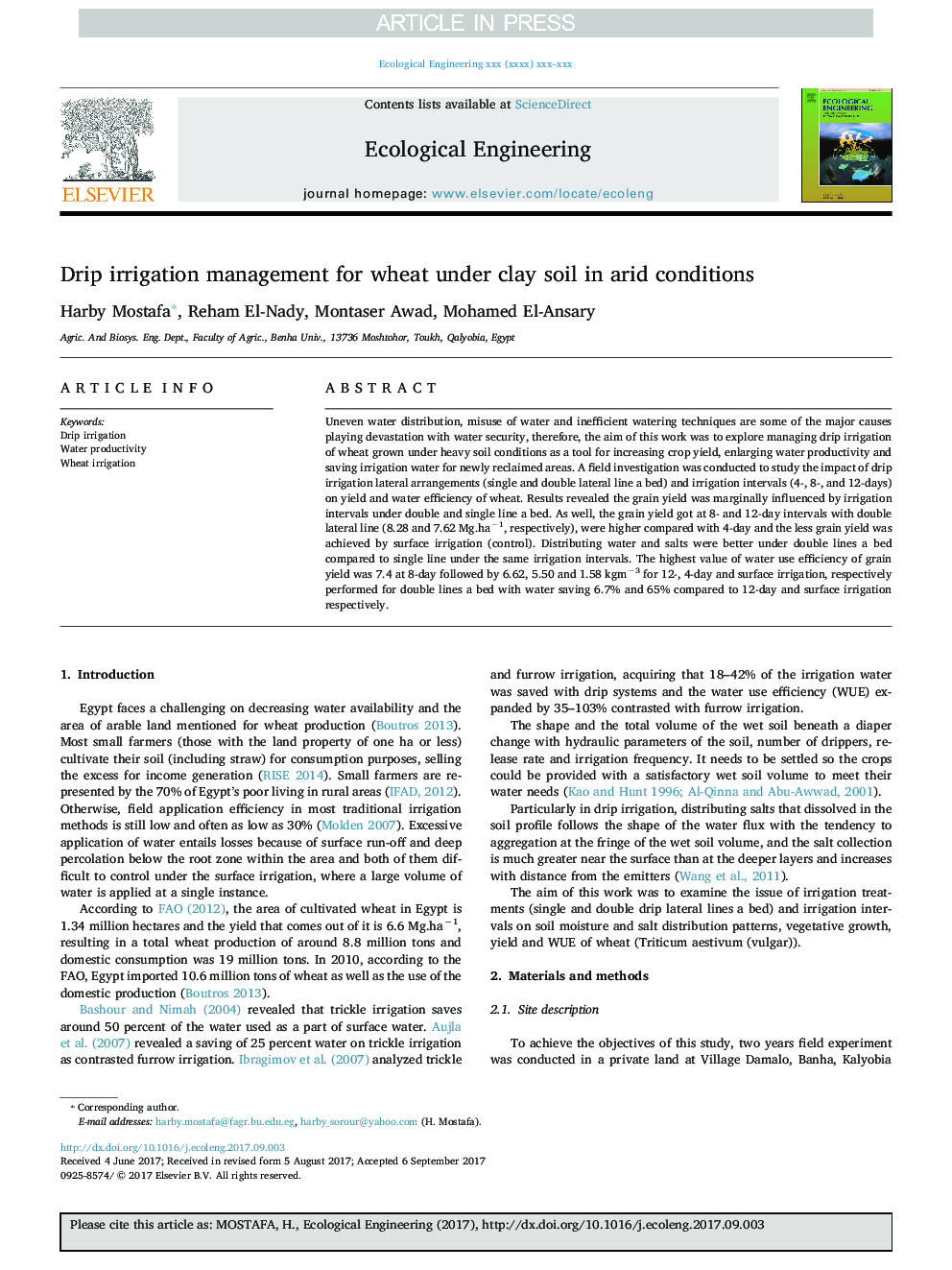| Article ID | Journal | Published Year | Pages | File Type |
|---|---|---|---|---|
| 10223352 | Ecological Engineering | 2018 | 9 Pages |
Abstract
Uneven water distribution, misuse of water and inefficient watering techniques are some of the major causes playing devastation with water security, therefore, the aim of this work was to explore managing drip irrigation of wheat grown under heavy soil conditions as a tool for increasing crop yield, enlarging water productivity and saving irrigation water for newly reclaimed areas. A field investigation was conducted to study the impact of drip irrigation lateral arrangements (single and double lateral line a bed) and irrigation intervals (4-, 8-, and 12-days) on yield and water efficiency of wheat. Results revealed the grain yield was marginally influenced by irrigation intervals under double and single line a bed. As well, the grain yield got at 8- and 12-day intervals with double lateral line (8.28 and 7.62 Mg.haâ1, respectively), were higher compared with 4-day and the less grain yield was achieved by surface irrigation (control). Distributing water and salts were better under double lines a bed compared to single line under the same irrigation intervals. The highest value of water use efficiency of grain yield was 7.4 at 8-day followed by 6.62, 5.50 and 1.58Â kgmâ3 for 12-, 4-day and surface irrigation, respectively performed for double lines a bed with water saving 6.7% and 65% compared to 12-day and surface irrigation respectively.
Keywords
Related Topics
Life Sciences
Agricultural and Biological Sciences
Ecology, Evolution, Behavior and Systematics
Authors
Harby Mostafa, Reham El-Nady, Montaser Awad, Mohamed El-Ansary,
